

We had our challenges this spring. The first month was CoVid'd into Zoom'ing. But we generally had clear skies, but yet a balky 12" telescope. Still, everyone got either some images, or Nikon images (Amanda), or borrowed raw material from a previous semester. Not tragic - it happens! We still got enough points of data on our variable stars projects to make combined class light curves, and compare them to the best available data and have our traditional friendly competition for who estimated the best magnitudes for these stars. Always fun to do this, while we munch.
Images from our big Thetis Occultation on May 2.
I set up the 8SE scope and gear from out of the back of my RAV4 behind the 700 building. Students worked on their image project until 9:25pm, when they walked out back to join me and I showed them how the faint star was occulted by the asteroid for several seconds. Kirk Bender also got data, and perhaps Karl as well (data unreduced - he's quarantined for now). It was a difficult set of data to reduce - the column noise in my camera, perhaps some vibration due to students walking during the event around the scope, and the shortness (only 2.5s) and small drop (1 mag or so), made it require using the column noise median filter before it could be pulled from the video properly. Thanks to IOTA's Tony George for help on that!
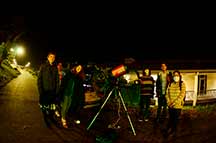 |
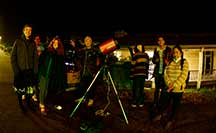 |
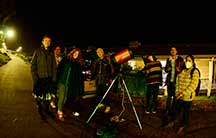 |
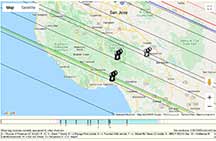 |
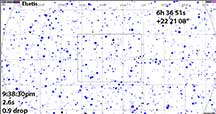 |
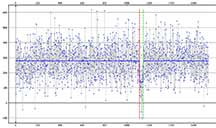 |
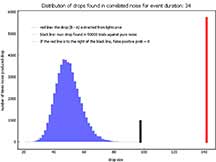 |
Pictures from our Final Exam party night
|
Thanks Ryan, for the pizza, and Cory for the quiche! |
Hard at work crunching numbers to produce the phase plots for our Cepheid variable star observations |
Ryan assembling her work sheets |
Amanda had the best data for Beta Lyrae |
And Lucia had the best data for Eta Aquilae |
|
Ryan won for Delta Cephei... |
JP squeeked through with the best data for Zeta Geminorum |
And Cory had the best data for T Monocerotis. Congrats! |
Gallery of images for our Astrophoto project
Cory Panttaja Picture is of the Sunflower Galaxy, a spiral galaxy of magnitude 8.6, a size in the sky of 12.6 arc |
(Jason's image - from earlier semester by Isaac raw image).No labels yet. |
Juan Pablo Chavez For the Whirlpool Galaxy (m51): I took 3 5-minute exposure pictures, 1 3-minute picture, and 1 two minute picture, all through the 12” ST2000xcm camera at the Cabrillo Observatory. For every picture I dark frame corrected using a 4 min 25 degree dark field using the adaptive setting since every picture was different lengths. I then colorized them using single shot color processing and then opened all 6 photos in registax 5 and stacked them together. The stack photo was then opened in photoshop where I first used light pollution removal enhanced flatten action. I followed by changing the lower curves to darken the black space around the stars, next adding a deep blue photo filter and editing the hue and saturation to help add more color to it. I blurred and used smart sharpen on the picture to reduce some of the noise in the picture. The last thing I did before cropping and resizing the image was editing the levels to darken the sky a bit more. The cropping and resizing was to center the galaxy a bit more and to make the picture the required sizes and next emailing to Rick.
|